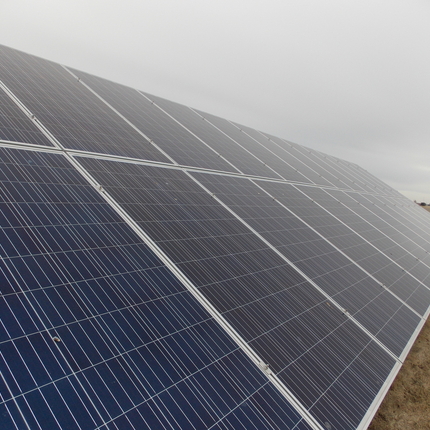By Lindsay Mouw, former staff member. This was also published in the Norfolk Daily News on Nov. 29, 2021.
Across the country and throughout Nebraska renewable energy is taking off as more municipalities, utilities, and companies make commitments to reduce carbon emissions.
With that in mind, Nebraska’s three largest public power utilities—the Nebraska Public Power District (NPPD), Omaha Public Power District (OPPD), and Lincoln Electric System (LES) have made commitments to decrease carbon emissions. LES and OPPD already have goals in place to be 100% net-zero carbon emissions by 2040 and 2050, respectively. NPPD will soon vote on a goal to reach net-zero carbon emissions by 2050 as well.
As Nebraska transitions to greater renewable energy usage, utilities have the responsibility to maintain reliability and affordable utility rates for their customers while decreasing carbon emissions. LES is indicating this can be accomplished. In its recently-released 2022 budget, LES is proposing a system-wide 1% decrease to retail electric rates and for the fifth consecutive year, no rate increase while at the same time increasing its renewable energy production. The utility realized a $6.4 million decrease in power costs from 2021 to 2022 largely due to lower fixed generation costs, which includes capital costs, land, insurance, and some labor costs.
LES consistently remains one of the most reliable utilities in the country. In 2019, the utility ranked in the 94th percentile for reliability, and over a 5 year period (2016 to 2020) the utility’s outage statistics have remained level. In 2019, LES’s average outage time per customer under normal conditions was 13.5 minutes, compared to the national average of 124.6 minutes.
While maintaining reliability and reducing rates for customers, LES has, according to its decarbonization goal plan, “increased renewable energy production from the equivalent of 9% of retail sales in 2010 to 49% in 2020, simultaneously reducing CO2 emissions by 53% from 2010 to 2020.” Today, the utility’s energy generation portfolio consists of 35% natural gas, 34% renewable sources, and 31% coal.
LES still has a ways to go toward achieving its goal, but they are demonstrating that, along the way, it is possible to maintain reliability, keep electric costs low for customers, and transition to renewable energy for a decarbonized grid.
As more utilities, industries, and municipalities choose to get their energy from renewable sources, Nebraska has the opportunity to establish itself as a renewable energy leader. This is good news for rural communities that stand to benefit from renewable energy development across the state. The generation of wind and solar power brings considerable tax dollars to local communities where the power is generated, which helps fund public schools, infrastructure, and emergency services. The combination of tax generation, affordable electric rates, and a resilient, sustainable electric system is a win for rural Nebraska.





